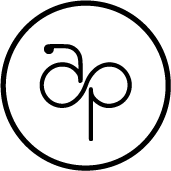Methods and Processes
Research is a key component to any great strategy and should be the foundation of great design. Designers have to be explorers, adventurers, prospectors, who are always searching for that sliver of gold in the creek. What motivates people? What makes them who they are? What are they saying, and what are they not saying?
I have been exposed to many research methods and practice various methods in my professional life. I'd like to share a few of my favorite methods with you here.
For a more robust explanation of UX research, visit the Compendium for a curated list of research methodology, cognitive biases, and UX processes.
Participatory Workshops
My experience facilitating workshops is considerable and always a learning experience. Having facilitated a variety of workshops (in-person and remote) including Design Sprints, Product and Strategy Sprints, alignment workshops, Jobs to be Done Workshops, and client engagement retrospectives, I have seen the good and the bad. Fortunately, I have had the opportunity to improve my facilitation skills through AJ&Smart, located in Berlin, Germany. I am a Certified Design Sprint Facilitator and trainer, so I guess you could say I’m a little biased toward the AJ&Smart method.
Jonathan Courtney —
“Being a great facilitator is not about consulting or giving great advice, it's about guiding a team to do what they're already great at. It's about removing obstacles and noise so others can focus on doing their best work. As a facilitator, you're not the hero, you're the guide. Let go of the need to impress, rather focus on everyone else's success.”
Interviews and storytelling
If you know me, you know I like to talk. This is super valuable is during interviews. I can keep a conversation with nearly anyone and when the goal is to extract thoughts, speculations, or memories (data) from people, I’m pretty OK at it. I can build rapport quickly with most people and that allows them to feel comfortable talking to me. Encouraging memories and storytelling with people can be a struggle, but finding the human quality in human centered research is important. Let’s do it right! Let’s be people!
The storytelling method is very strong for me. I can rely on a simple prompt to begin a train of memories, then use a single instance or memory to dive deeper into the meaning of an experience. I can’t imagine listening to a deeply meaningful story and not being changed after. In some sense, this type of storytelling experience is closely related to ethnography because you are experiencing the memories with the participant.
Contextual Inquiry
Contextual inquiry is a great opportunity to gain direct insights from your research subjects. The approach to a productive CI is to let the participant show you their work and processes. Put yourself in the role of student and absorb all there is to know about your participant's job and skill set. Listen to what they have to say. After all, they know more about their job than you or I (probably) ever will. Watch what they do. You will see their use of tools and their process might be counter intuitive to your assumptions. Most likely, you will encounter discrepancies in what they say and do; this is a normal cognitive bias. Spoken and unspoken data will reveal itself in photos, audio, or video recordings. After the tasks are complete, talk to your participant about what you witnessed.
One thing I really value when conducting a CI is the participants’ workarounds. I love the ingenuity people use to accomplish their goals. They use the tools and experience the work every day; we should consider their perspective when building solutions.
Watch, listen, learn.



